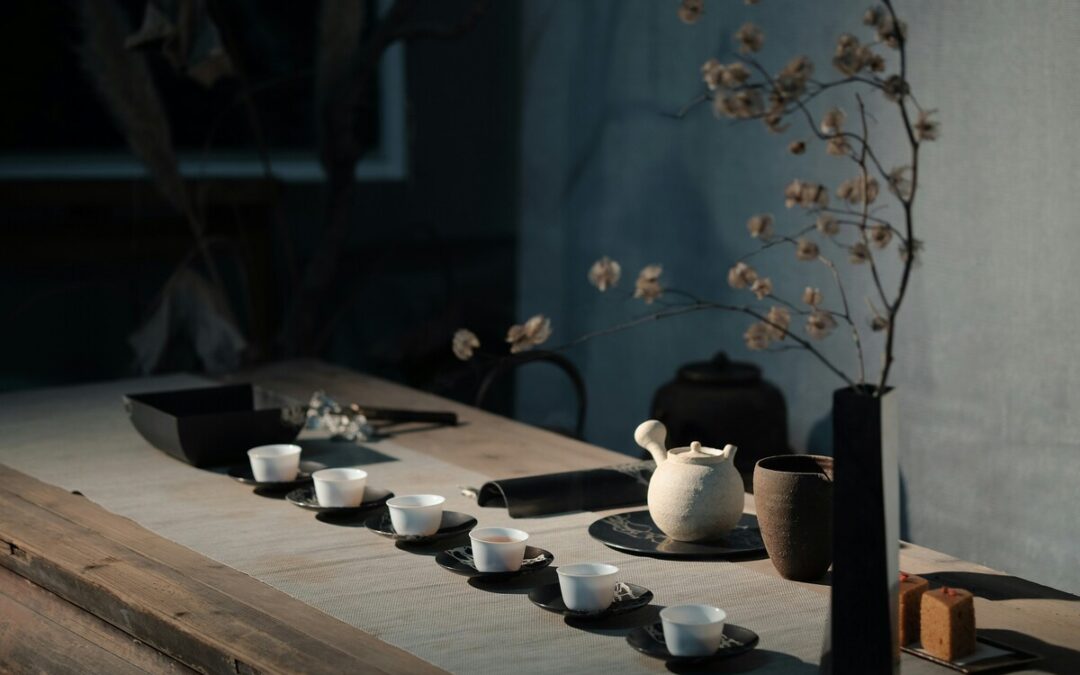Japanese tea culture is a rich tapestry woven with history, tradition, and deep respect for nature. From the serene rituals of tea ceremonies to the refreshing sip of a cold brew on a summer day, Japanese tea offers an array of flavors and experiences that reflect the country’s dedication to harmony, purity, and balance. In this post, we’ll explore the origins, types, and significance of Japanese tea, along with some tips on how to best enjoy these timeless brews.
A Glimpse into Japanese Tea History
Tea first arrived in Japan in the early 9th century, introduced by Buddhist monks who traveled to China and brought back tea seeds. The monks used tea to aid meditation, but over time, tea drinking spread beyond monasteries and into the upper echelons of society. By the 12th century, tea cultivation had become widespread, and the iconic Japanese tea ceremony began to take shape.
Tea has been more than just a beverage in Japan; it is a spiritual and cultural cornerstone. The famous tea master Sen no Rikyū (1522-1591) perfected the Japanese tea ceremony, known as chanoyu. His principles of simplicity, mindfulness, and natural beauty continue to influence Japanese tea culture today.
Types of Japanese Tea
Japan is home to a variety of teas, each with its own distinct characteristics, flavor profiles, and brewing methods. Here are some of the most popular types of Japanese tea:
-
Sencha
Sencha is the most common type of green tea in Japan, making up about 80% of the country’s tea production. It is known for its fresh, grassy flavor with a slight bitterness and sweet undertones. Sencha is harvested from the first or second flush of tea leaves and is typically steamed to preserve its green color and vibrant taste. -
Matcha
Matcha is the powdered green tea that plays a central role in the traditional Japanese tea ceremony. It is made from shade-grown tea leaves that are ground into a fine powder. Matcha’s flavor is rich and creamy, with a slightly bitter, umami taste. Beyond the tea ceremony, matcha is used in various sweets and beverages worldwide. -
Gyokuro
Gyokuro is a premium shade-grown tea like matcha, but instead of being powdered, it is served as loose leaves. It has a sweet, full-bodied flavor with deep umami notes due to its unique growing process, which increases the concentration of amino acids in the leaves. -
Hōjicha
Hōjicha is a roasted green tea with a warm, toasty flavor. It is less astringent than other green teas, making it a favorite for those seeking a milder, smooth drink. Because it is low in caffeine, it’s often enjoyed in the evening or by those sensitive to caffeine. -
Genmaicha
Genmaicha is a blend of green tea and roasted brown rice. This combination produces a nutty, slightly sweet flavor that complements the grassy notes of the tea. It’s a comforting, everyday tea that is often consumed during meals or as a light snack in between. -
Kukicha
Also known as twig tea, Kukicha is made from the stems, stalks, and twigs of the tea plant, rather than the leaves. It has a light, refreshing flavor with hints of sweetness. Like Hōjicha, it is low in caffeine, making it a good option for an evening drink.
The Japanese Tea Ceremony: A Ritual of Mindfulness
At the heart of Japanese tea culture is the tea ceremony, or chanoyu. Rooted in Zen Buddhist philosophy, this ceremony is much more than a simple act of drinking tea. It is a meditative practice that celebrates harmony, respect, purity, and tranquility.
Every element of the tea ceremony is carefully considered, from the utensils to the placement of each object, creating an atmosphere of peacefulness. The ceremony invites participants to focus on the present moment, encouraging mindfulness and appreciation for the beauty of simplicity.
Health Benefits of Japanese Tea
In addition to its cultural significance, Japanese tea is also known for its health benefits. Green tea, in particular, is rich in antioxidants, especially catechins like EGCG, which are known to promote heart health, aid in weight loss, and provide anti-inflammatory benefits. The L-theanine in green tea also promotes relaxation while enhancing focus and alertness.
Matcha, given that you’re consuming the entire tea leaf, is particularly rich in nutrients. It’s often considered a superfood due to its concentration of antioxidants, vitamins, and minerals.
How to Enjoy Japanese Tea
To fully appreciate Japanese tea, it’s important to brew it correctly. Here are some general tips for brewing Japanese teas:
- Sencha: Use water around 70-80°C (160-180°F) and steep for 1-2 minutes. The result should be a clear, greenish-yellow brew.
- Matcha: Whisk 1-2 teaspoons of matcha powder with hot water (about 70-80°C) using a bamboo whisk until frothy.
- Gyokuro: This delicate tea should be brewed at a lower temperature, around 50-60°C (122-140°F), and steeped for a longer time, about 2-3 minutes.
- Hōjicha and Genmaicha: Both can be brewed with slightly hotter water, around 90°C (194°F), for about 30 seconds to 1 minute.
When drinking Japanese tea, take a moment to slow down and appreciate the aroma, flavor, and color of the tea. Like the tea ceremony itself, this can become a calming ritual in your everyday life.
Conclusion
Japanese tea is a reflection of the country’s deep respect for nature, simplicity, and mindfulness. Whether you’re sipping on a bold matcha or a soothing hōjicha, each tea offers a unique taste of Japan’s rich cultural heritage. By learning about and savoring different types of Japanese tea, you’ll not only indulge in their flavors but also connect to centuries of tradition and wellness. So, the next time you brew a cup of Japanese tea, take a moment to appreciate the artistry and history steeped in every drop.
Enjoying Japanese tea is not just about flavor—it’s about embracing a moment of peace in the midst of our busy lives.

